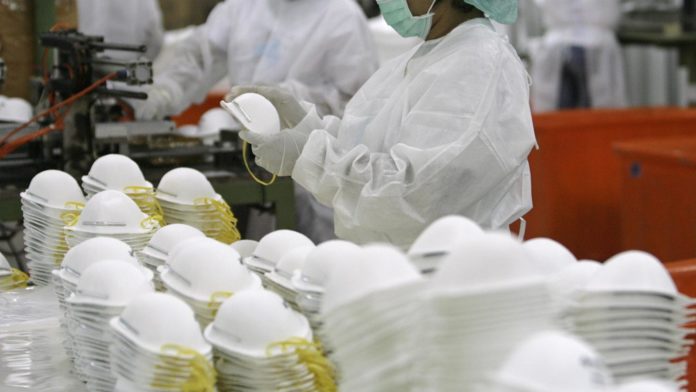
Israeli inmates have started to manufacture protective face masks to support the fight against the coronavirus (Covid-19) pandemic, the Israel Prison Service (IPS) announced Thursday. The masks will initially be supplied within the prison service. Eventually, the IPS hopes to produce enough masks to provide them to security forces and first responders.
Five correctional facilities throughout the country will be dedicated to mask production, with the IPS estimating they would reach a production rate of 3,000 to 5,000 masks per day.
The masks, made from fabric so that they could be washed and reused, will be manufactured in three colors: light blue masks for prison guards and staff, orange masks for inmates, and brown masks for high-security prisoners.
“The inmates working on the masks production line will follow the Ministry of Health’s guidelines and be in full coordination with the ministry and other relevant government agencies” the IPS said in a statement.
On Sunday morning, Israel recorded more than 8,000 confirmed coronavirus cases, out of which 106 are currently reliant on ventilators. Nearly 500 people have recovered from the disease in Israel.
Amir Kurtz / CTech
{Matzav.com}












Cases and *deaths* from COVID19 are disproportionately higher for Jews [globally].
Something doesn’t add up.
I am hearing that “her entire block is infected” regarding a religious community where people don’t overcrowd.
If this disease is indeed a bioweapon, there is reason to believe that it was possibly used to target and scare and punish religious Jews, the most vocal supporters of @POTUS.
What is even more strange is that the broader pandemic may be fake.
I have employees who are not remotely Jewish, and certainly not Charedi, in other parts of NYC. Many of those worksites had almost no one left to come to work (for essential jobs only; all others were stopped), with some hospitalized in serious condition, at the same time it was starting to hit the frum neighborhoods. Many other communities also live in close quarters with several generations of extended family, and when one child was quarantined, it was often the grandparents who stayed home to care for them while the parents were still working, which caused a lot of spread among the vulnerable old-age, low-income, (often immigrants without proper insurance) population.